Industry News, trenchless people
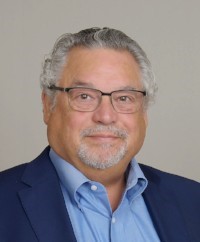 HydroScience is pleased to announce the opening of their fifth HydroScience office, located in Carlsbad, California, and led by Regional Manager Robert J. (Jud) Warren, PE, BCEE. Jud will be leading their efforts to provide water, wastewater, and recycled water engineering services in Southern California.
HydroScience is pleased to announce the opening of their fifth HydroScience office, located in Carlsbad, California, and led by Regional Manager Robert J. (Jud) Warren, PE, BCEE. Jud will be leading their efforts to provide water, wastewater, and recycled water engineering services in Southern California.
Jud has close to 40 years of project delivery experience for clients throughout the Western United States, and most recently in San Diego County. He will be backed by the full resources of their engineers and support staff in the other HydroScience offices. Led by Jud, HydroScience looks forward to implementing their mission of providing the highest quality work for their clients in this new region—the first time and every time.
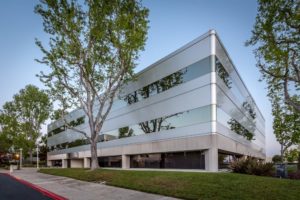 HydroScience Carlsbad Office
HydroScience Carlsbad Office
2131 Palomar Airport Rd, Suite 208
Carlsbad, CA 92011
Jud Warren, PE, BCEE
760.815.3219
jwarren@hydroscience.com
Industry News, trenchless people
Offers expert-led, hands-on curriculum in a distraction-free environment
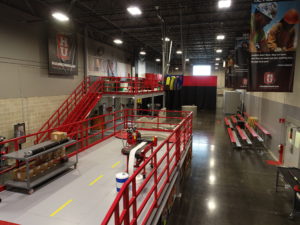
Nov. 6, 2018 – LAKE MILLS, Wisc. – The first class of contractors to graduate from HammerHead University, the world’s most advanced trenchless technique learning center, received manufacturer certification after three days of hands-on, guided instruction Sept. 17. The training facilities and curricula had been officially announced as fully operational at the Lake Mills, Wisconsin, headquarters of HammerHead Trenchless, a Charles Machine Works company, during its annual August sales meeting.
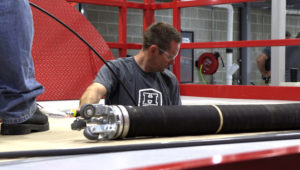 The new two-story, 5,000-square-foot educational facilities provide trenchless method contractors, plumbers, project engineers and utility company and municipal crews both classroom and hands-on application training for every HammerHead product line. Courses are available for the pipe ramming, pipe bursting and pipe slitting methods; lateral and vertical cured-in-place pipe (CIPP) cleaning, preparation and rehabilitation; and pipe and culvert spot repair.
The new two-story, 5,000-square-foot educational facilities provide trenchless method contractors, plumbers, project engineers and utility company and municipal crews both classroom and hands-on application training for every HammerHead product line. Courses are available for the pipe ramming, pipe bursting and pipe slitting methods; lateral and vertical cured-in-place pipe (CIPP) cleaning, preparation and rehabilitation; and pipe and culvert spot repair.
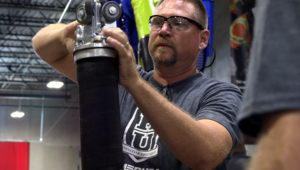 HammerHead University’s first graduates included six Apollo Home employees. Founded in 1910, the Cincinnati-based business provides sales, service and repair of home mechanicals including heating, cooling, ventilation, electrical, plumbing and sewer systems for more than 800,000 customers in its Ohio, Kentucky and Indiana service area.
HammerHead University’s first graduates included six Apollo Home employees. Founded in 1910, the Cincinnati-based business provides sales, service and repair of home mechanicals including heating, cooling, ventilation, electrical, plumbing and sewer systems for more than 800,000 customers in its Ohio, Kentucky and Indiana service area.
Services such as drain cleaning, water line replacement and sewer repair are overseen by Apollo Excavation Manager Dustin White, who was one of those returning for a three-day course on HammerHead cured-in-place pipe (CIPP) lining systems and point repair. White received his initial HammerHead CIPP certification prior to the existence of the facilities. He compared how much the university-like setting improved the learning experience for four Apollo technicians attending with him for their initial certification.
“The controlled environment really makes a difference,” White said. “The mockup creates a better real-life experience. It takes away the anxiety of a ‘game-time’ situation. The pipe was embedded in gravel, but everything was above ground, giving our people who are new to CIPP better visual access to see exactly how it works.”
Jeff Urbanski, HammerHead Training and Technical Services Manager, said a fully controlled learning environment allows students to focus on the fundamentals of the applications without the distraction of specific, site-based complications. Initially grounded in an application’s principles, students are better prepared to anticipate how such jobsite factors will affect an operation, as well as help them to more quickly determine the root cause of any problem that arises.
“This is innovative education. It’s not just reading from a book. We simulate real-life applications, replicating situations that put participants inside a house or a manhole on a street. But taking away the soil, watery ground conditions and confined entries in their first experience with the method results in more consistently repeatable performance over a wide range of worksite conditions.”
A controlled learning environment is also a safer environment to gain practical experience before applying techniques in the field, he said. “Mistakes in a controlled setting result in greater understanding, whereas on an actual job, mistakes can cause expensive downtime due to equipment or property damage.”
For those who already have that grounded understanding, Urbanski said instructors can alter mockups to duplicate a specific site’s set of complications. “Contractors can study in advance the impact of certain variables like cobbled soils and flooded pits before they face them on the job.”
Courses are led by application experts. “Our HammerHead University teaching staff consists of former plumbers, knowledgeable factory and industry equipment specialists and experienced field technicians – all highly trusted advisors,” Urbanski said.
The HammerHead University setting enables courses to be held year-round. “No matter what the weather is outside, 365 days a year, participants can be using Same Path technologies to install, replace or rehab pipe, from gas-line slitting to CIPP applications.”
HammerHead is currently in the process of establishing an “e-learning platform” with continuing education units for its courses. Urbanski said, “In association with our courses, students will be able to go online and for a small fee take a pass-fail course to receive certification that applies specifically to their state or a given municipality if its governed by specific guidance. Certification will be annually renewable.”
Average class sizes in a given application range between two and five people. The University demonstration area accommodates up to 18 participants in as many as eight separate application stations simultaneously. Larger class sizes can be accommodated in the HammerHead University conference room.
To enroll or request information about specialized courses, contact HammerHead Trenchless at (920) 648-4848, or go to https://www.hammerheadtrenchless.com/training.
Photo 1: HammerHead University, the world’s most advanced trenchless technique learning center.
Photos 2-3: Students learn the hands-on curriculum in a distraction-free environment.
Industry News, trenchless projects
Project profile submitted by Insta-Pipe – Trenchless Pipe Repair using the Pull in Place pressure liner “PRIMUS Line”.
Rehabilitation of a 16” cast iron water supply line to Camp Murray Military Base, WA
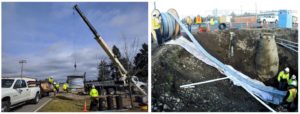
Client:
US Army Corps of Engineers
Engineering and Installation Partner:
Insta-Pipe Inc. Tumwater, WA
Year of Construction:
February 2018
Type of Construction Measure:
Rehabilitation of a 16-inch cast iron water main near Tacoma, WA
Our Services:
• Delivery of the flexible 18-inch Primus Liner with NSF/ANSI 61 approval
• Delivery of the corresponding end fittings with ANSI flanges (150 lbs) with NSF/ANSI 61 approval
Situation:
In 2017 Camp Murray Military Base was replacing their water supply system due to age concerns. The majority of the system was renewed with open trench remove and replace, one of the two supply lines to the base was unable to be accessed in this manner. The supply line runs under a railway as well as Interstate 5, the main interstate highway on the west coast, making a trenchless operation the only solution. The engineers had to select from two options for this project: Primus Line, or HDPE lining. Primus Line was ultimately selected to maximize the hydraulic capacity in the line.

Rehabilitation System:
The client opted to have our installation partner, Insta-Pipe Inc. renew the water main with the Primus Line® system, a proven solution for the trenchless rehabilitation of pressure pipelines. The three-layer composite liner consists of an NSF/ANSI 61 certified PE inner coating, a Kevlar® core to accommodate the operating pressure, and an abrasion-resistant PE outer layer to protect the Kevlar® core during the installation process. The semi-structural solution is not bonded to the host pipe, can traverse bends of up to 45 degree, and can be inserted in lengths of up to 8,000 ft. in one single pull.
Project Description:
Maximizing hydraulic capacity was top priority on this project, leading to the selection of Primus Line as the rehabilitation method. The host pipe was cast iron with an internal diameter of approximately 16.38 inches, a length of 305 feet, and contained no bends. With the combination of a short run with no bends, the decision was to install a Primus Line® DN 450 MD with a nominal diameter of 18 inch and a nominal design pressure of 232 psi. Since the technology works with an annular space to achieve long insertion lengths and negotiate bends, the liner provides an actual outer diameter of 16.06 inch and inner diameter of 15.59 inch. The system has a straight-line pressure rating of 200 psi and thus capable of accommodating the maximal operating pressure of 60 psi. To complete the system, the medium pressure connectors with an operating pressure of 150 psi were used to guarantee a durable and tensile strong connection. In a first step, the two excavation pits for the installation of the Primus Line® system had to be created and the water main was disconnected from the pipeline network, opened and CCTV inspected. After that, incrustations and debris were removed with pull through metal scrapers, rubber disks and a vac truck to create a free inner diameter, which is required to make sure the liner is not damaged during the installation process. After cleaning the host pipe, the pre-folded and coiled on a transport reel Kevlar® reinforced composite liner was inserted and subsequently the liner was inflated with 7 psi to turn it into a round shape. Finally, the medium pressure termination fittings were installed and a leak test with a test pressure of 150 psi was performed and successfully completed. Concentric reducers were then used to adapt the 18-inch flanges of the Primus Line connectors down to the 16-inch flanges used in the rest of the supply system.

Insta-Pipe, Trenchless Pipe Repair
REPAIR SEWERS WITHOUT TRENCHING, WITH SEWER PIPE LINING
With over 25 years of experience, Insta-Pipe Trenchless Pipe Repair can repair sewer and storm lines and repair outside drain pipes with pipe lining services in WA, OR and surrounding areas. Don’t trench when you can take advantage of our pipe lining evaluation and services.
Phone: 360-943-5840 Toll Free: 866-463-9747
855 Trosper Rd SW, 108-204 Olympia, Washington 98512
www.insta-pipe.com
Raedlinger Primus Line, Inc.
112 South Tryon Street, Suite 1130
Charlotte, North Carolina 28284
info@primusline.com www.primusline.com
Industry News, trenchless products
 Oxford Plastics is an NASTT member and manufacturer of innovative products. Oxford Plastics has developed innovative products for the temporary covering of trenches.
Oxford Plastics is an NASTT member and manufacturer of innovative products. Oxford Plastics has developed innovative products for the temporary covering of trenches.
The HS20-44 rated Oxford LowPro 23/05 Composite Modular Road Plates eliminates the need to apply anti-skid, the need for ramping with cold patch, the need for heavy lifting equipment, & noise complaints are a thing of the past!
Utility contractors are increasing safety and bringing more to their bottom line by incorporating the LowPro 23/05 plate system within their fleet.
Handling of the Oxford LowPro 23/05 RoadPlate inner sections are now more ergonomic with the NEW EasiLift handles.
Storage and transport of the modular sections are now easier with the NEW Stillage. The stillage provides safety to the workers, better fleet management, allows for easy inspection, has both hoist & fork lift access, and is stackable.
“Work smarter, not harder” is what they strive for at Oxford Plastics USA. For more info call 800-567-9182, or visit www.oxfordplasticsusa.com.
Industry News, trenchless projects
Tough TBM and Team overcome the odds with Atlanta breakthrough
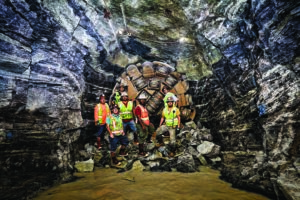 On October 4, 2018, onlookers watched as a 3.8 m (12.5 ft) diameter Robbins Main Beam TBM completed its epic journey. The TBM, christened “Driller Mike”, after local rapper and activist “Killer Mike”, overcame extremely hard rock conditions along a curving 8.0 km (5.0 mi) tunnel to bolster the city of Atlanta, Georgia, USA’s water supply.
On October 4, 2018, onlookers watched as a 3.8 m (12.5 ft) diameter Robbins Main Beam TBM completed its epic journey. The TBM, christened “Driller Mike”, after local rapper and activist “Killer Mike”, overcame extremely hard rock conditions along a curving 8.0 km (5.0 mi) tunnel to bolster the city of Atlanta, Georgia, USA’s water supply.
The new tunnel brings the Atlanta Water Supply Program one step closer to increasing the city’s water capacity to between 30 and 90 days depending on daily usage. “Our schedule for the project was very aggressive but the project team stayed together to overcome issues related to the mining of the tunnel,” said Bob Huie, Project Director for the PC Russell JV, the Construction Manager at Risk (CMAR) for the project.
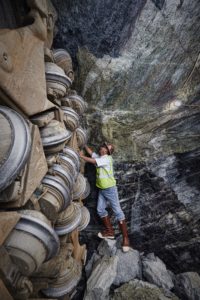 The unique structure of the project team is credited with the overall project success despite challenges. “I’m proud of our team. They had obstacles and challenges and challenging ground, but they stuck together and didn’t give up, and they were successful. There was great leadership and supervision all around,” said Larry Weslowski, Tunnel Superintendent for the PC Russell JV.
The unique structure of the project team is credited with the overall project success despite challenges. “I’m proud of our team. They had obstacles and challenges and challenging ground, but they stuck together and didn’t give up, and they were successful. There was great leadership and supervision all around,” said Larry Weslowski, Tunnel Superintendent for the PC Russell JV.
The project is only the third such large construction project in the U.S. to use the CMAR structure. The PC Construction/HJ Russell JV was selected as the CMAR for the project, who then purchased the Robbins Main Beam TBM for the tunnel. The designer for the construction works including tunnel and shafts, JP2—consisting of Stantec, PRAD Group, Inc., and River 2 Tap—specified the hard rock TBM. Operation and assembly of the TBM was then sub-contracted to the Atkinson/Technique JV.
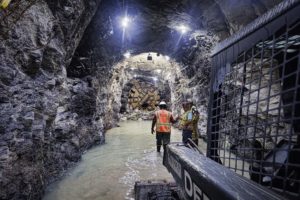 The robust TBM was assembled using Onsite First Time Assembly (OFTA) at the massive Bellwood Quarry site with help from Robbins personnel. “The guys built everything per the specs to help with scheduling. It was a challenge but there was no negativity during the process,” said Weslowski. Despite summer temperatures hitting 43 degrees Celsius (110 degrees Fahrenheit) and 100 percent humidity, the TBM was ready to launch by October 2016.
The robust TBM was assembled using Onsite First Time Assembly (OFTA) at the massive Bellwood Quarry site with help from Robbins personnel. “The guys built everything per the specs to help with scheduling. It was a challenge but there was no negativity during the process,” said Weslowski. Despite summer temperatures hitting 43 degrees Celsius (110 degrees Fahrenheit) and 100 percent humidity, the TBM was ready to launch by October 2016.
Hard granitic rock challenged the 19-inch disc cutters from the outset. “There was ground so hard that it would take eight hours to go 1.5 m (5 ft). It was between 117 and 310 MPa (17,000 and 45,000 psi) UCS. The beginning of the job was tough,” said Weslowski, but he added that once the learning curve had been overcome “they started breaking project records left and right towards the end. We got a best day of 38.4 m (126 ft). Rates just kept increasing.”
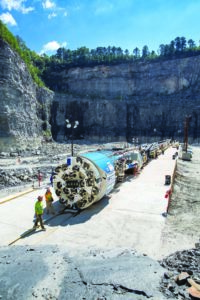 Other challenges included groundwater encountered during tunneling. “We did encounter groundwater contamination that required remediation. This remediation work was completed successfully,” said Huie.
Other challenges included groundwater encountered during tunneling. “We did encounter groundwater contamination that required remediation. This remediation work was completed successfully,” said Huie.
With tunneling complete, the USD $300 million project for the City of Atlanta’s Department of Watershed Management is on track to meet its scheduled overall completion date of September 2019. The project will turn the inactive Bellwood quarry into a 9.1 billion liter (2.4 billion gallon) raw water storage facility connecting with the Chattahoochee River and various water treatment facilities.
Image 1: The PC Russell JV and Atkinson/Technique JV celebrate the breakthrough of the Robbins TBM on October 4, 2018 in Atlanta, Georgia, USA.
Image 2: The Robbins TBM and 19-inch cutters overcame exceedingly hard granitic rock at strengths up to 310 MPa (45,000 psi) UCS.
Image 3: Crews are proud of the coordination required to overcome a host of challenges, including tight tunnel curves and contaminated groundwater that required remediation.
Image 4: The robust TBM was assembled using Onsite First Time Assembly (OFTA) at the massive Bellwood Quarry site with help from Robbins personnel.
 HydroScience is pleased to announce the opening of their fifth HydroScience office, located in Carlsbad, California, and led by Regional Manager Robert J. (Jud) Warren, PE, BCEE. Jud will be leading their efforts to provide water, wastewater, and recycled water engineering services in Southern California.
HydroScience is pleased to announce the opening of their fifth HydroScience office, located in Carlsbad, California, and led by Regional Manager Robert J. (Jud) Warren, PE, BCEE. Jud will be leading their efforts to provide water, wastewater, and recycled water engineering services in Southern California. HydroScience Carlsbad Office
HydroScience Carlsbad Office

 The new two-story, 5,000-square-foot educational facilities provide trenchless method contractors, plumbers, project engineers and utility company and municipal crews both classroom and hands-on application training for every HammerHead product line. Courses are available for the pipe ramming, pipe bursting and pipe slitting methods; lateral and vertical cured-in-place pipe (CIPP) cleaning, preparation and rehabilitation; and pipe and culvert spot repair.
The new two-story, 5,000-square-foot educational facilities provide trenchless method contractors, plumbers, project engineers and utility company and municipal crews both classroom and hands-on application training for every HammerHead product line. Courses are available for the pipe ramming, pipe bursting and pipe slitting methods; lateral and vertical cured-in-place pipe (CIPP) cleaning, preparation and rehabilitation; and pipe and culvert spot repair. HammerHead University’s first graduates included six Apollo Home employees. Founded in 1910, the Cincinnati-based business provides sales, service and repair of home mechanicals including heating, cooling, ventilation, electrical, plumbing and sewer systems for more than 800,000 customers in its Ohio, Kentucky and Indiana service area.
HammerHead University’s first graduates included six Apollo Home employees. Founded in 1910, the Cincinnati-based business provides sales, service and repair of home mechanicals including heating, cooling, ventilation, electrical, plumbing and sewer systems for more than 800,000 customers in its Ohio, Kentucky and Indiana service area.


 Oxford Plastics is an NASTT member and manufacturer of innovative products. Oxford Plastics has developed innovative products for the temporary covering of trenches.
Oxford Plastics is an NASTT member and manufacturer of innovative products. Oxford Plastics has developed innovative products for the temporary covering of trenches. On October 4, 2018, onlookers watched as a 3.8 m (12.5 ft) diameter
On October 4, 2018, onlookers watched as a 3.8 m (12.5 ft) diameter  The unique structure of the project team is credited with the overall project success despite challenges. “I’m proud of our team. They had obstacles and challenges and challenging ground, but they stuck together and didn’t give up, and they were successful. There was great leadership and supervision all around,” said Larry Weslowski, Tunnel Superintendent for the PC Russell JV.
The unique structure of the project team is credited with the overall project success despite challenges. “I’m proud of our team. They had obstacles and challenges and challenging ground, but they stuck together and didn’t give up, and they were successful. There was great leadership and supervision all around,” said Larry Weslowski, Tunnel Superintendent for the PC Russell JV. The robust TBM was assembled using Onsite First Time Assembly (OFTA) at the massive Bellwood Quarry site with help from Robbins personnel. “The guys built everything per the specs to help with scheduling. It was a challenge but there was no negativity during the process,” said Weslowski. Despite summer temperatures hitting 43 degrees Celsius (110 degrees Fahrenheit) and 100 percent humidity, the TBM was ready to launch by October 2016.
The robust TBM was assembled using Onsite First Time Assembly (OFTA) at the massive Bellwood Quarry site with help from Robbins personnel. “The guys built everything per the specs to help with scheduling. It was a challenge but there was no negativity during the process,” said Weslowski. Despite summer temperatures hitting 43 degrees Celsius (110 degrees Fahrenheit) and 100 percent humidity, the TBM was ready to launch by October 2016. Other challenges included groundwater encountered during tunneling. “We did encounter groundwater contamination that required remediation. This remediation work was completed successfully,” said Huie.
Other challenges included groundwater encountered during tunneling. “We did encounter groundwater contamination that required remediation. This remediation work was completed successfully,” said Huie.